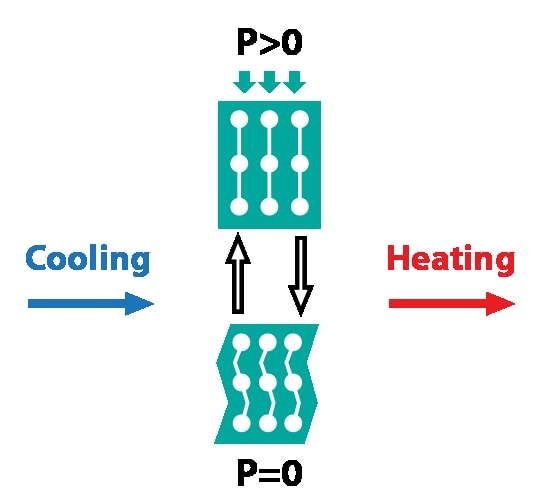Important Facts For Prelims
Elastocaloric Effect
- 12 Oct 2019
- 3 min read
According to a research published in the Journal Science, the elastocaloric effect, if harnessed, may be able to do away with the need of fluid refrigerants used in fridges and air-conditioners.
Background
- Refrigeration plays an important role in a wide range of human activity and keeping people and things cool consumes huge amounts of energy.
- They use fluids such as hydrofluorocarbons which are susceptible to leakages, and can contribute to global warming.
- An alternative approach involves using “caloric” materials, which release heat when subjected to an external stimulus such as an applied magnetic or electric field or a compressive force. When the stimulus is removed, the material will absorb heat, thus cooling its surroundings.
- Recently, owing to the strong demand for efficient and environmentally friendly refrigeration technologies, materials with giant caloric effects, including elastocaloric, have been widely investigated.
Elastocaloric Effect
- When rubber bands are twisted and untwisted, it produces a cooling effect. This is called the “elastocaloric” effect.
- The elastocaloric effect can be regarded as the entropy change under isothermal condition or temperature change under adiabatic condition when a mechanical stress is used or released in a given material.
- Energy is the ability to do work. Although all forms of energy are interconvertible, and all can be used to do work, it is not always possible, even in principle, to convert the entire available energy into work.
- Entropy is a measure of how much energy is not available to do work.
- Basically, elastocaloric materials are solids capable of stress-induced reversible phase transformations during which latent heat is released or absorbed.
Elastocaloric Effect Replacing Fuel
- In the elastocaloric effect, the transfer of heat works much the same way as when fluid refrigerants are compressed and expanded.
- When a rubber band is stretched, it absorbs heat from its environment, and when it is released, it gradually cools down.
- In order to figure out how the twisting mechanism might be able to enable a fridge, the researchers compared the cooling power of rubber fibres, nylon and polyethylene fishing lines and nickel-titanium wires.
- Observations:
- They observed high cooling from twist changes in twisted, coiled and supercoiled fibres.
- They reported that the level of efficiency of the heat exchange in rubber bands is comparable to that of standard refrigerants.
- These findings may lead to the development of greener, higher-efficiency and low-cost cooling technology.





